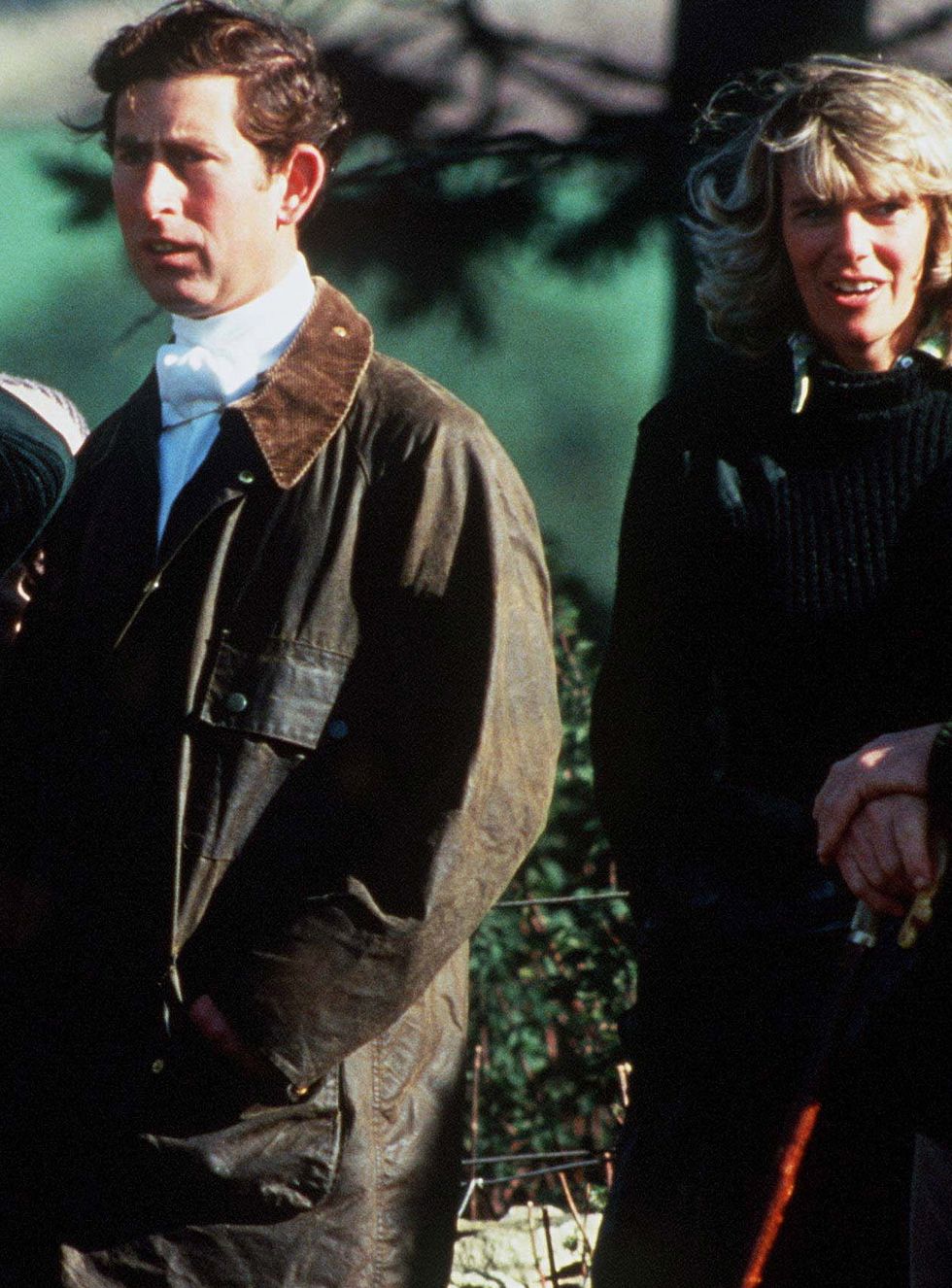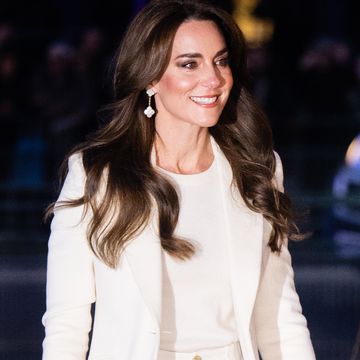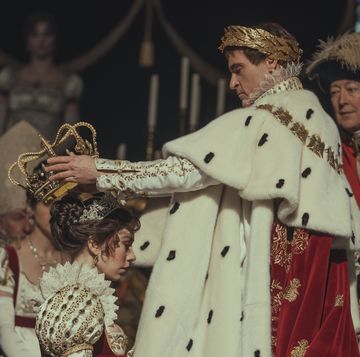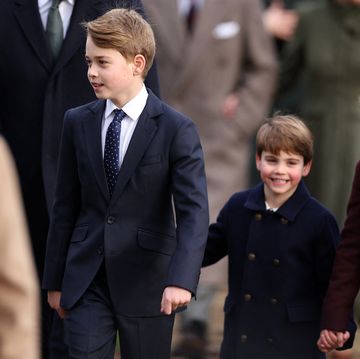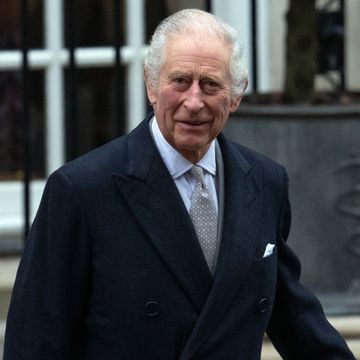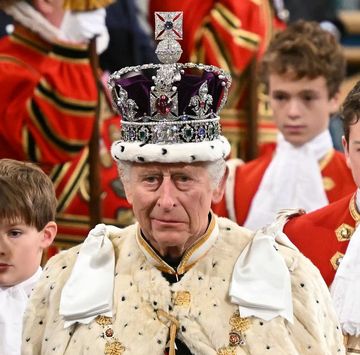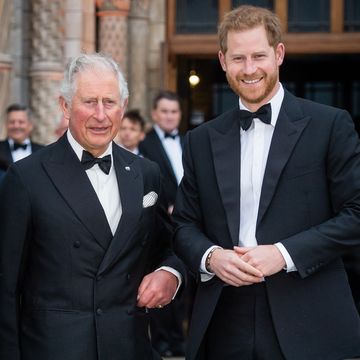A young Prince Charles faced one inescapable demand of royal life: he needed a bride. Marriage was the first step in producing heirs to the throne and would provide a partner to sit by his side as queen when he became king. But the prince couldn’t have just anyone fill this role. His potential bride had to be highly born, have a virginal reputation and could not be Catholic (the latter was a legal requirement at the time). In addition, this woman had to be willing to live within the strictures of royal life. Unsurprisingly, the hunt for a bride proved difficult for the prince.
Charles fell for Camilla, but she did not fit the royal requirements to be his bride
Though marriage was a royal necessity, tying the knot wasn’t a priority for Prince Charles when he was in his early 20s. Instead, he followed an approach suggested by his great-uncle and trusted adviser, Lord Louis "Dickie" Mountbatten, who told him, "I believe in a case like yours that a man should sow his wild oats before settling down."
This was 23-year-old Charles' mindset when he met Camilla Shand in the summer of 1971. According to some accounts, she introduced herself by saying, "My great-grandmother was the mistress of your great-grandfather — so how about it?" (She was talking about Edward VII's affair with her ancestor Alice Keppel.) Whether or not this story is true, the two were soon involved. They grew close in 1972, when Camilla's on-and-off boyfriend, Andrew Parker Bowles, wasn't in England due to his army service.
However, even as they fell for each other, Camilla was never a likely candidate to become Charles' bride. She was from a well-off family, but she wasn't an aristocrat. Mountbatten had also counseled Charles, "I think it is disturbing for women to have experiences if they have to remain on a pedestal after marriage." It was expected that Charles' princess-to-be would have a "pure" reputation, and Camilla wasn't a virgin.
Given Camilla's unsuitabilities, and Charles' own reluctance to get married when he was so young, there was no proposal before he sailed off with the Royal Navy in January 1973. Camilla, who was also in love with Parker Bowles, got engaged to him on March 15, 1973. Charles was upset by the news but could not stop the wedding. Camilla and Andrew married in July of that year.
He had several failed romances, including with Diana's older sister
Charles, who was one of the most eligible bachelors in the world in the 1970s, didn't pine away for Camilla for long. The prince didn't have to remain a virgin, so he was free to spend time with a variety of women. Not all of these companions were seen as potential brides, but Lady Jane Wellesley was. As the daughter of the Duke of Wellington, she more than met the aristocratic requirement. However, no romance took off between the two, and they stayed friends.
In 1977, Charles was linked to Lady Sarah Spencer (the older sister of Diana). But all chances of a match evaporated when she spoke to the tabloids about the prince. In an interview, she shared, "I wouldn't marry anyone I didn't love — whether it was the dustman or the King of England. If he asked me I would turn him down. He doesn't want to marry anyway. He's not ready for marriage yet."
Charles had said in 1975, "I personally feel that a good age for a man to get married is around 30." After he hit that milestone in 1978, pressure mounted for him to choose a bride. Charles' mentor Mountbatten thought Amanda Knatchbull, who was Mountbatten's granddaughter and Charles' second cousin, was the ideal match. The prince proposed to her in 1979, but she turned him down. For her, the royal life, with its constrained choices and constant scrutiny, held little appeal.
Another girlfriend, Davina Sheffield, seemed to be accepted by the royal family but was eliminated from contention after a boyfriend announced that they'd lived together. Charles also dated Anna Wallace, a Scottish heiress. But she broke things off because he was paying too much attention to Camilla, whose romantic relationship with the prince had resumed around 1979.
Charles' future wife needed the ability to handle intense scrutiny and pressure
Getting back together with Camilla still didn't make her a potential bride for Charles. Even if she were to end her marriage, the idea of the heir to the throne marrying a divorcée was then unacceptable. Mountbatten reminded Charles that his mother's uncle David, aka Edward VIII, had needed to renounce being king in order to wed the divorced Wallis Simpson.
Charles liked his bachelor life, with Camilla as a close companion. Yet this didn't change the fact that he needed to marry, though the search for his bride remained difficult. For example, tabloids avidly tracked his dates so they could update the public on his love life, which posed a serious problem. One ex-girlfriend recounted that during her time with the prince the press "broke into my house, left notes, followed me everywhere. It was definitely a deterrent."
In addition to seeking a bride who could cope with intense public scrutiny, Charles wanted a woman who was willing to face the pressures of royal life, and who would take on the role for the right reasons. He said in 1976, "You see, every time a girl tells me that she loves me, I have to ask myself whether she really loves me or just wants to be queen. And whoever I choose is going to have a jolly hard job, always in my shadow, having to walk a few steps behind me, all that sort of thing."
Then Charles got to know Lady Diana Spencer. She was a 19-year-old who hadn't had a boyfriend. A daughter of an earl, she had ties to the royal family — one sister was married to the queen's secretary and her grandmother was a lady-in-waiting to the monarch — which made Charles assume she understood what would be required of his bride. Even Camilla approved of Diana, in part because she didn't think the younger woman would interfere in her own relationship with the prince.
With pressure mounting, Charles chose Diana regardless if he was in love or not
There was a 12-year age difference between Charles and Diana, but initially, that wasn't seen as a problem. Mountbatten had advised Charles that "for a wife he should choose a suitable and sweet-charactered girl before she meets anyone else she might fall for." The prince also felt Diana's youth would make it easier to mold her into the wife and queen he wanted.
Being in love would have been a nice bonus, but it wasn't a necessity for Charles. The prince believed marriage was "the last decision on which I want my head to be ruled by my heart." He also drew inspiration from the example of his grandparents, George VI and the Queen Mother, who had grown to love each other after they married. Plus Charles was getting older and needed to marry someone.
In January 1981, his father, Prince Philip, told Charles to either propose to Diana or to let her go to preserve her reputation. Charles confessed to a friend, "I'm terrified sometimes of making a promise and then perhaps living to regret it. It is just a matter of taking an unusual plunge into some rather unknown circumstances that inevitably disturbs me but I expect it will be the right thing in the end." On February 6, 1981, he took the leap and proposed to Diana. To his surprise, she quickly agreed to marry him. Charles had found his bride.
The two wed on July 29, 1981, and Charles' hunt for a bride was over. Unfortunately, married life would soon see Charles regretting his choice. Issues that had been swept aside, such as Diana's youth and the short time they'd spent together before marrying — he and Diana had only seen each other about 13 times before the engagement — grew into insurmountable marital problems. Charles and Diana divorced in 1996. A decade later, Charles would have a new bride: he and a divorced Camilla finally tied the knot themselves.

